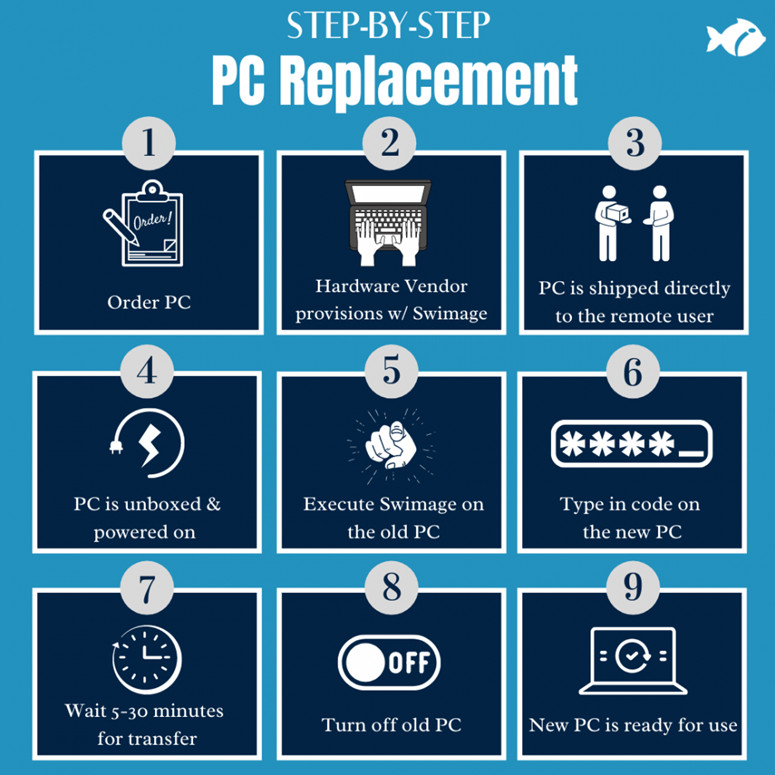Replace Hardware – PC Replacement Migration
 On average, 25% of all PCs will be replaced every year at a company. When this occurs, it is expensive for the business and will interrupt the productivity for the employee.
On average, 25% of all PCs will be replaced every year at a company. When this occurs, it is expensive for the business and will interrupt the productivity for the employee.Savings with Swimage:
Using Swimage for PC replacements saves a company hundreds of dollars per event and will ensure the employee remains productive.
The most common procedure for PC replacement requires a number of steps and may leave the employee unproductive for some period, either because of missing data, missing applications, time to reconfigure the new PC, or waiting for the new PC altogether.
PC replacements are especially challenging for remote workers. The typical replacement process for someone working remotely looks as follows:
- The new PC is ordered from the hardware vendor.
- The PC is shipped to a PC provisioning center.
- A shipping label and box is shipped to the remote employee for their old PC.
- The employee ships the old PC to the build center.
- Data is copied from the old PC to remote storage.
- The new PC is built with a base image and base applications.
- The tech logs into the new PC with the employee’s credentials.
- The data is restored and other user applications are installed.
- The PC is shipped back to the remote employee.
Due to the cost and challenges with this method of PC replacements, many companies have adopted the cloud storage model so that the data transfer step can be eliminated. This method has multiple downsides. One is that any localized data will be lost upon migration. Employees rarely keep all of their data in the cloud. Another disadvantage is that cloud storage is not practical for some employees, especially those with large files and/or slow internet speeds. Cloud storage also can be costly and places control of your data in the hands of others.
The Swimage PC replacement process eliminates the need for data transfer at a build center or usage of cloud storage. The old PC data, settings, and content are transferred directly to the new PC via network cable or over the network.

The Swimage PC replacement process is easy enough for anyone.
The Swimage PC replacement workflow is just a few simple steps:
- The new PC is ordered from the hardware vendor.
- The vendor either loads a Swimage-prepared image onto the PC or builds a Swimage thumb drive.
- The PC is shipped to the employee.
- The employee powers on the PC new PC. If using the thumb drive, they will insert it when booting.
- Employee runs the Swimage program on the old PC.
- Swimage asks for a code to allow data, settings, and application information to transfer from the old PC to the new PC directly and automatically.
- When complete, the user logs into the new PC and it functions just like the old PC.
- The employee turns off the old PC and ships it back.
- The employee immediately begins using the new PC.
The savings in build technician time, user time, PC shipping costs, and data preservation are significant.
